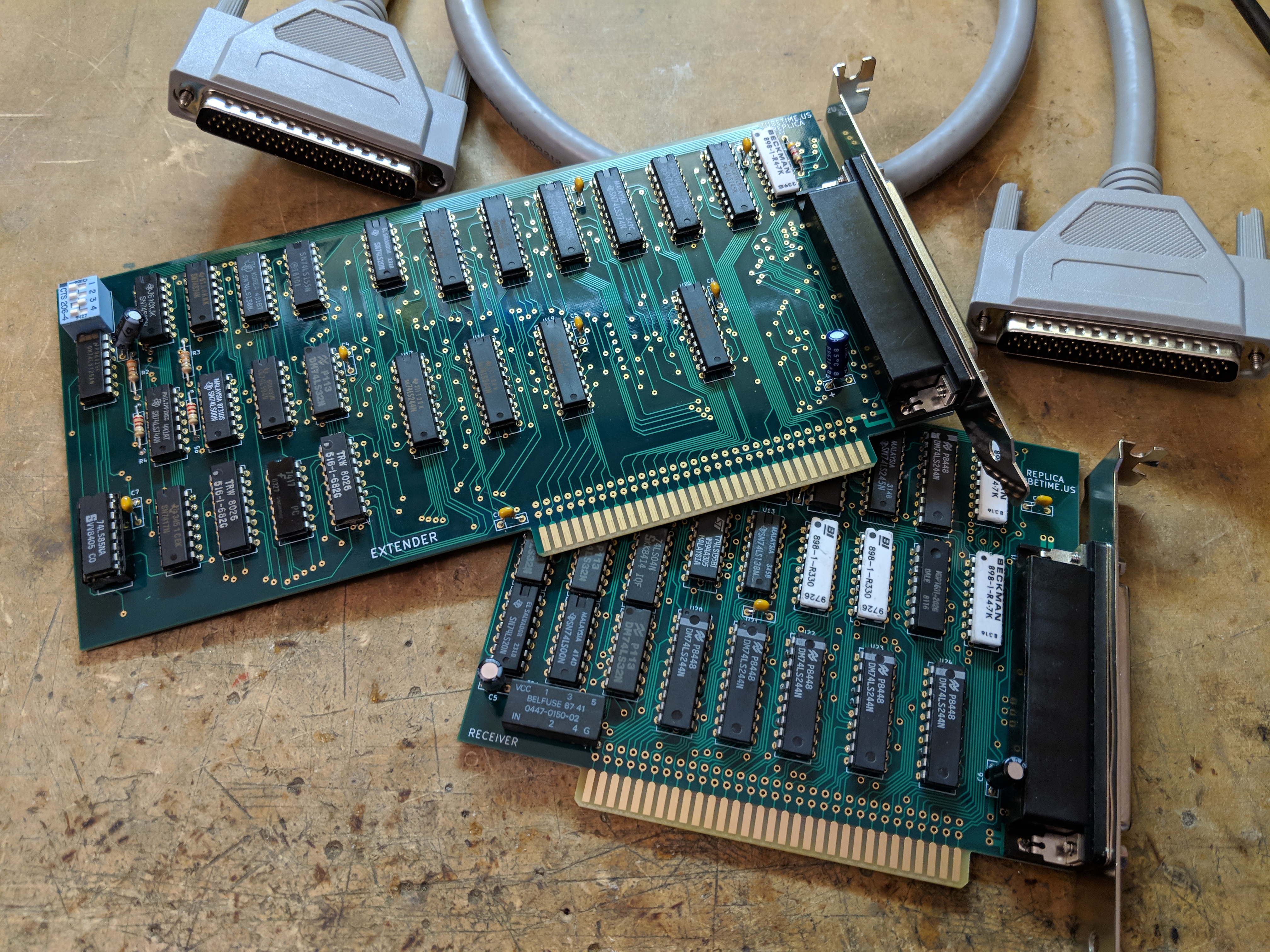IBM 5161 Expansion Chassis Extender and Receiver Cards
September 6, 2018 Projects 6 CommentsToday is an exciting day for people who collect vintage IBM PCs and XTs! IBM had a somewhat obscure add-on product called the 5161 expansion chassis, which looked exactly like an IBM PC but with a difference case badge. It allowed customers to add two additional full-height drives (typically 10MB MFM hard drives) and 7 usable expansion slots (excluding the one used for the MFM disk controller). And yes, with those full-height hard drives, it sounded like a jet engine.
Connecting the expansion chassis to the host PC were two expansion cards. One, the extender, was placed in the host PC. The other, the receiver, went into the expansion chassis. A 62-pin D-sub connector tethered the two together.
One small problem: with the few remaining 5161 units, the extender card was typically separated and lost. Often the connecting cable was as well. If you got lucky, you might find a PC with the extender card still in it. Regardless, people often own more expansion chassis than extender cards, making them useless. Until now.
Based on careful study of high resolution photos of the cards and the schematics published in the IBM technical reference manuals, I’ve been able to design duplicates of both the extender and receiver cards. Details are in my GitHub repository.
Even if you don’t own an IBM 5161 (and I don’t blame you, it’s a bit obscure!), you might still find the cards useful. The receiver card works fine in common passive ISA backplanes! One small caveat: The backplane in the 5161 provides the 14.318MHz OSC signal which many ISA cards need. Passive backplanes do not provides this signal. You can check edge contact B30 on the back of the card edge. If there’s a missing contact or a contact that doesn’t connect to a trace, the card should work.
This card also needs some initialization to function. The BIOS in the PC/XT take care of this automatically, but this may not be true for all BIOSes. I’ve only tested it in my IBM PC. Even so, it may be possible to get it working by poking at the card’s I/O ports.
Enjoy!

